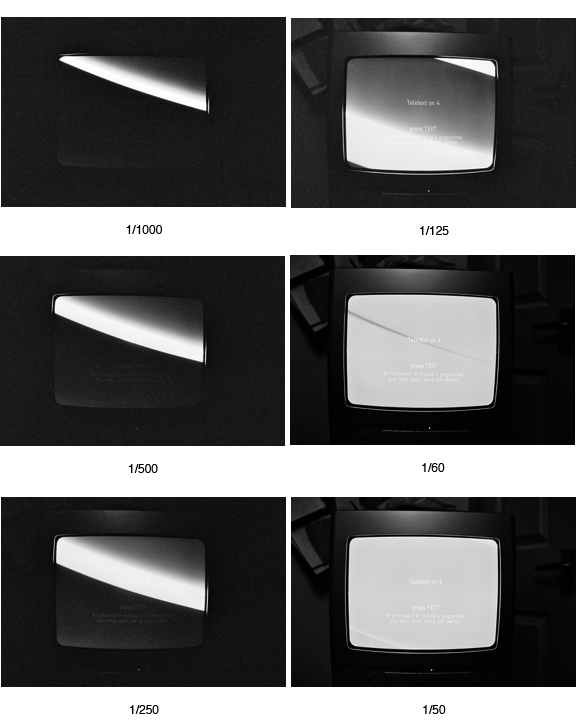tbm
Established
Two weeks ago I was out shooting with my R8 and 90mm Summicron AA and 180mm APO Elmarit and in bright light with bothlenses somewhat opened, probably at f/5.6, the R8's viewfinder showed shutter speeds between 1/2000th and 1/4000th of a second. Had I been using my M6 TTL, what would have happened to my exposures if it, too, had discovered such bright light intensity despite its maximum shutter speed of 1/100th of a second? In other words, how far beyond 1/1000th of a second can the M6 TTL discern?
Pickett Wilson
Mentor
The meter would have indicated over exposure and the camera would have used whatever shutter speed you set it on.
bhop73
Well-known
I don't get it.. the knob only goes to 1/1000..
E.M
Well-known
If you want to shoot in the same conditions with your M6 as you did with your R-camera, you'd have to use a ND-filter or load a slower film.
A neutral density-filter reduces the light and is useful if you want to shoot with large apertures.
http://www.etiennemichiels.com
A neutral density-filter reduces the light and is useful if you want to shoot with large apertures.
http://www.etiennemichiels.com
tbm
Established
Thanks, E.M. I forgot to mention that the high shutter speeds I experienced that day were due to my having loaded T-max 400 in my R8, so had I mentioned that my question would have been revised by adding what do I do if I've only got a 400-speed film with me because I forgot to bring, say, 100-speed film with me?
mojobebop
Well-known
1000
1000
i read the m7 has accurate 1000 sec. exposure, but the manual shutter of the m6, & others
is 700.
1000
Two weeks ago I was out shooting with my R8 and 90mm Summicron AA and 180mm APO Elmarit and in bright light with bothlenses somewhat opened, probably at f/5.6, the R8's viewfinder showed shutter speeds between 1/2000th and 1/4000th of a second. Had I been using my M6 TTL, what would have happened to my exposures if it, too, had discovered such bright light intensity despite its maximum shutter speed of 1/100th of a second? In other words, how far beyond 1/1000th of a second can the M6 TTL discern?
i read the m7 has accurate 1000 sec. exposure, but the manual shutter of the m6, & others
is 700.
stupid leica
i don't shoot rf
TBM, you only choices in that situation would be to:
1) Stop the lens down to a smaller aperture,
2) Load slower film,
3) Mount a ND filter.
1) Stop the lens down to a smaller aperture,
2) Load slower film,
3) Mount a ND filter.
Pablito
coco frío
TBM, you only choices in that situation would be to:
1) Stop the lens down to a smaller aperture,
2) Load slower film,
3) Mount a ND filter.
or pull the film (underdevelop)
Pickett Wilson
Mentor
Or shoot a DSLR with fast shutter speeds and full auto exposure.
35mmdelux
#Represent
I don't get it.. the knob only goes to 1/1000..
Thank you. Unless there is a worm hole or the time/space continuum ripped.
Dingo
Well-known
Thread of the day !
Roger Hicks
Mentor
What's the true maximum speed? Quite possibly about 1/800 unless the camera has been recently serviced.
Cheers,
R.
Cheers,
R.
Richard G
Mentor
But does any of this careful precision actually answer the OP's question? I am dying to find out. Thread of the day indeed.
Fraser
Well-known
dont need to worry about that living in dark scotland!
Chris101
summicronia
... 700.
... 1/800 ...
So about half a stop slow, that is, over exposed, when set to 1/1000. Is that then consistent for slower speeds, the effect of which would diminish as the speed goes down, or are they more accurate due to the way the shutter works?
Sparrow
Mentor
That’s a 50htz telly, shot with a freshly rebuilt m2 shutter in this case, but I imagine the m6 would be the same.
The chap that sees to my cameras says he likes to set them at 1/850 because it’s less stressful, he didn’t say for whom.
I always think of the fastest and slowest speeds on a clockwork camera as being for emergencies only, but then I’m a “good enough” type anyway.

The chap that sees to my cameras says he likes to set them at 1/850 because it’s less stressful, he didn’t say for whom.
I always think of the fastest and slowest speeds on a clockwork camera as being for emergencies only, but then I’m a “good enough” type anyway.

Roger Hicks
Mentor
So about half a stop slow, that is, over exposed, when set to 1/1000. Is that then consistent for slower speeds, the effect of which would diminish as the speed goes down, or are they more accurate due to the way the shutter works?
Dear Chris,
About +1/3 to +2/3 is normal with old-fashioned cloth focal-plane shutters at 1/1000 and (if I recall aright) ANSI standards allow for this with a +/- 2/3 tolerance (it's always +, of course) at 1/1000 and above. The standard drops to +/-1/3 at 1/500 and below. Personally I'd expect 1/1000 on an older Leica that's not been serviced to be around 1/800 (+1/3 stop) or at worst 1/650 (+2/3 stop); 1/500 to be at worst about 1/400 (+1/3 stop, though very probably 1/500); and other speeds to be as marked.
One of my old Pentax SVs runs about 1 stop slow down to 1/60 or so, i.e, every speed is half the marked speed, varying from 1/500 (1/1000) to 1/30 (1/60). The only accurate speeds on that camera are 1/15 to 1/4!
Cheers,
R.
Share:
-
This site uses cookies to help personalise content, tailor your experience and to keep you logged in if you register.
By continuing to use this site, you are consenting to our use of cookies.

